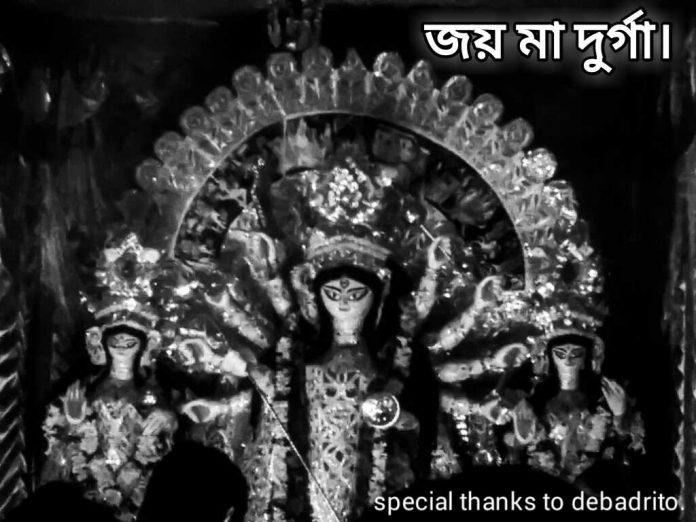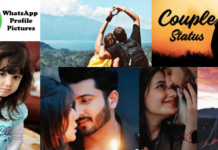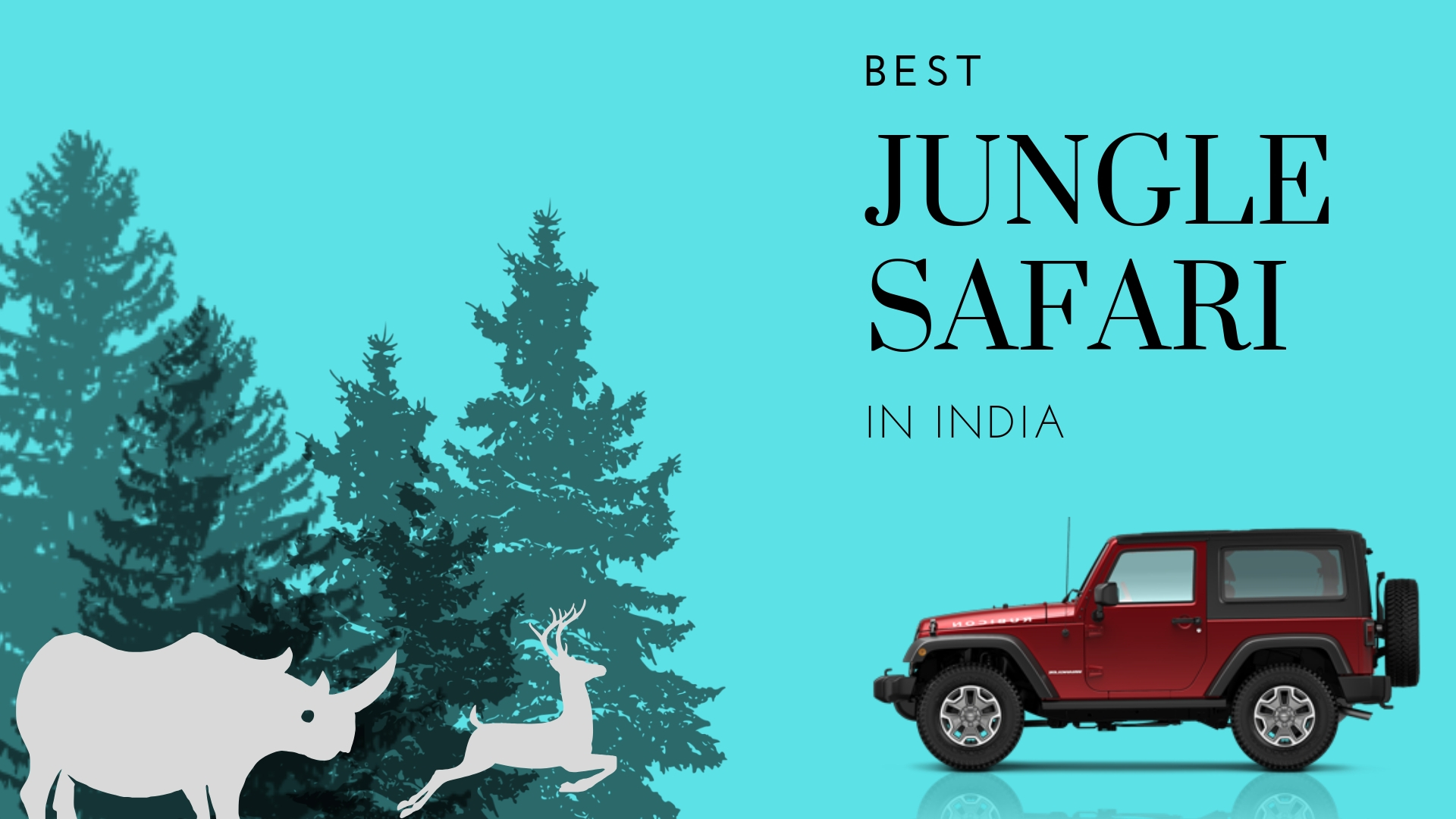The only name of the festival of ‘Durga Puja’ is enough to create butterflies in the stomachs of Bengalis living across the world. Although, the festival is celebrated in several states but the Bengalis celebrate ‘Durgotsava’ in a unique way with much more fun and enthusiasm which separates their celebration from other parts of the country.
Durgotsava marks the victory of Goddess Durga over the evil buffalo demon Mahishasur, is celebrated in Ashwin Shukla Paksha of Hindu calendar. The capital city of West Bengal, Kolkata which is known for its old colonial architecture, art galleries and rich culture becomes the most buzzing city during the festival. The ravishing idols of goddess Durga, majestic Pandals, colourful lighting and fun-filled ambience make Kolkata a must visit city during this festive time.
The nine nights of Navratri in Kolkata passes like a blink of an eye and every devotee turns emotional when the day of bidding adieu to goddess Durga approaches near.
Well, this is a broad idea of Kolkata’s ‘Durgotsava’ to which I introduced you. Now let’s dig more into the Bengali rituals and customs of this colourful festival and we will try to touch the other aspects too, like the delicious food which Bengali people eat and special attire which they wore during the festival.
One can enjoy Kolkata’s Durga Puja to fullest only when a person visits the city at least a week before the commencement of the festival. The preparations for the festival are as fascinating as the carnival itself. The city gets decked up a week prior to the festival and eagerness of welcoming Goddess home could be easily noticed on people’s face.
Chokku Daan

The auspicious ritual of ‘Chokku Daan’ is followed on the occasion of Mahalaya, in this custom eye of the idols of Goddess Durga are painted. Bengalis believe that goddess descends on earth at the time of drawing of the eyes of the idols. The majority of the idols are made in Kumartulli or potter’s locality where the potters carve magnificent idols and make them ready for the Puja but left the eyes undrawn. Then on the occasion of Mahalaya, devotees paint the eyes of idols by themselves and celebrate the descendants of the goddess in their abode.
Home Coming of Goddess
Durga Puja in Kolkata begins from the sixth day of Navaratri and the day is known as ‘Maha Shashti’ as per the Bengali tradition. Goddess Durga arrives in the material world with both her children lord Ganesha and lord Kartikeya (Goddess Durga considered as Avatar of Goddess Parvati ) from her heavenly abode on the occasion of Maha Shashti. Devotees welcome the goddess with the unbeatable zeal and consider the goddess as their own ‘Maa’ and decorate the idols with colourful flowers, jewellery and red vermilion. And, various sweets were also offered before the goddess. The face of the idols of the goddess is also unveiled on this day and at that moment the entire ambience gets reverberated by the sounds of Dholak and other musical instruments.
Kola Bou Bath
On the occasion of the seventh day of Navraatri, a small banana plant called Kola Bou is taken to a river which signifies invoking the presence of goddess in the idol. Devotees purify the plant by dipping it into the river and then carry it back in form of a procession and place it near the idol of the Goddess. The custom of invoking goddess in the idol marks the commencement of ritualistic prayers and Puja in all following days including the auspicious Ashtami and Navmi.
Dashami – The Last Day of Durga Puja
 ‘Dashami’ is considered as the saddest day by every Bengali and devotees of Goddess Durga, as at this day their beloved goddess departs from them and begins the journey of her heavenly abode. As per the Hindu mythology, it is believed that on this day, Goddess Durga gained victory over the Demon and thus restored the balance on the earth. The day is also known as Vijayadashami.
‘Dashami’ is considered as the saddest day by every Bengali and devotees of Goddess Durga, as at this day their beloved goddess departs from them and begins the journey of her heavenly abode. As per the Hindu mythology, it is believed that on this day, Goddess Durga gained victory over the Demon and thus restored the balance on the earth. The day is also known as Vijayadashami.
On this day, goddess Durga is worshipped for the last time by the devotees and many things were offered to the idol, and devotees with a heavy heart prepare to bid adieu to the goddess. Then the procession of the Goddess is carried out which is initiated by especially by the married women. All the women first smear Sindoor or vermilion powder on the goddess and then to each other, this practice marks the commencement of the journey of Goddess to her heavenly abode.
Then the Idol of the goddess is lifted from its place amid the reverberating sounds of musical instruments and grand procession is carried out till ghats where idols are immersed in water. Most of the idols are taken to Babu Ghat which is one of the popular places for immersion located near Eden Garden in Kolkata.
Food
Kolkata becomes a paradise for the foodies during the festival; the mouth-watering dishes and incredible varieties of Bengali cuisines are offered to the idol of the goddess. Special theme based Bhog are offered in many Durga Pandals which is later distributed among the devotees as a Prasad of the goddess.
Community kitchens are set up in many Pandals, and the delicious cuisines of these kitchens can easily give an orgasm to your taste buds. From snacks to sweet dishes these kitchens have lots of variety to offer to food enthusiasts and it includes Luchi, Alur Torkari, Sandesh, Tangra Macher Jhol, Shukto, Mutton Biryani, Aloo Potol Posto, Malpua and many dishes which could pamper your taste buds.
Traditional Dress up
The charm of beautiful Bong belles rises to cloud 9 during the festival, they dress up themselves in the traditional red and white coloured finery and visit Pandals to pay reverence to the goddess. And, men wear Punjabi Payjama to match the glamour of the occasion.
Bengalis have imbibed the tradition of wearing a white sari with red border. As the colour red exemplifies the beauty of the Bengali woman. This vibrant colour signifies love, passion, happiness, and celebration which is also a reason why it is preferred in the culture. White is the symbol of purity and peace thus, it is used to balance the vibrancy of red.
Durga Puja is not just a festival for Bengali people, but it’s also a way to express their love to Goddess Durga to whom they consider as their mother. Bengalis believe that Kolkata is the abode of Durga Maa, and she comes every year to her home during the Navraatri. In the 9 days period of Navraatri, Bengali folks keep all their personal work at the bay and engage themselves in paying reverence to the goddess. The entire city do not sleeps during the festival and nine days festival passes in a blink of an eye. And on the day of Dashmi, when the goddess goes back to her heavenly abode, sights of people weeping in the lonely corner of majestic Pandals can be found easily. However, it does not lower down their festive zeal and after a break of few months the city starts gearing up again for welcoming the goddess and the countdown starts again of the next Durga Puja.












